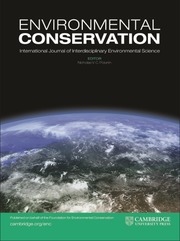Article contents
Wildlife species preferences differ among children in continental and island locations
Published online by Cambridge University Press: 29 March 2017
Summary
Efforts to prioritize wildlife for conservation benefit from an understanding of public preferences for particular species, yet no studies have integrated species preferences with key attributes of the conservation landscape such as whether species occur on islands (where invasive exotics are the primary extinction threat) or continents (where land use change is the primary extinction threat). In this paper, we compare wildlife species preferences among children from a continental location (North Carolina, USA, n = 433) and an island location (Andros Island, The Bahamas, n = 197). Children on the island preferred feral domesticated species and different types of taxa than mainland children, perhaps due to the strongly divergent species richness between the regions (e.g. island children showed greater preferences for invertebrates, lizards and aquatic species). Boys preferred fish, birds and lizards more than girls, whereas girls preferred mammals. The fact that island children showed strong preferences for invasive species suggests challenges for conservation efforts on islands, where controlling invasive exotic species is often of paramount importance, but can conflict with cultural preferences for these same species.
Keywords
- Type
- Papers
- Information
- Environmental Conservation , Volume 44 , Issue 4: Thematic section: Humans and Island Environments , December 2017 , pp. 389 - 396
- Copyright
- Copyright © Foundation for Environmental Conservation 2017
Footnotes
Supplementary material can be found online at https://doi.org/10.1017/S0376892917000133
References
- 8
- Cited by




